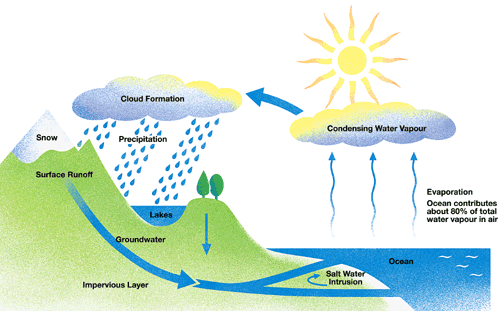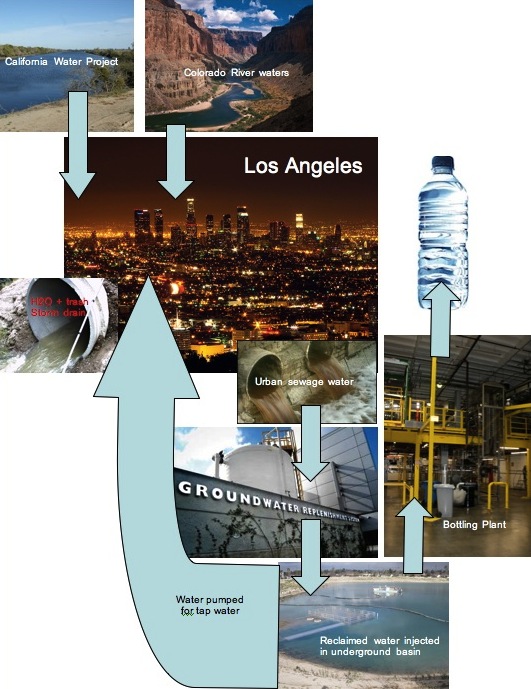
Remember what your middle school science teacher told you about the water cycle? Water evaporates, condensates in clouds, travels across the land, precipitates as it encounters land elevations, run in torrents, penetrates the grounds, sits in undergrounds or surface lakes and eventually flows towards the ocean.
When you hit grad school and you’re determined to dig up the story yourself by putting together all the pieces of a very fragmented system, here’s what you learn the water cycle really looks like. The natural system seems to have taken a few twists and turns under the influence of the ignorance but also genius at times of the human species.

The Orange County Groundwater Replenishment System (OCGWR) represents a unique twist to the complex urban water supply cycle. Using a mix of microfiltration, reverse osmosis, UV and hydrogen peroxide treatment, OCGWR treats 70 million gallons of sewage each day and converts it into safe drinking water. That’s enough water to meet the needs of 500,000 people. Ironically, the outlet of this wastewater recycling plant has some of the purest water in the county. In fact, the water coming out of the OCGWR plant is so devoid of any mineral salts that an additional process is required to add these back in order to make it drinkable.
Are you enjoying this article? Read more like this, plus SSIR's full archive of content, when you subscribe.
Sewage recycling would probably never be characterized as sexy but there is much to be excited about OCGWR. OCGWR’s cost of water is competitive even without significant subsidies. Its energy consumption, though substantial, is only half of that required to pump water from Northern California to Orange County. The treated water allows Orange County to maintain its groundwater at sustainable levels and to prevent saltwater intrusion into its aquifer. However, the genius of the project lies in the fact that it has convinced the residents of one of the country’s richest counties that the toilet is a viable source of drinking water (albeit with a $500 million plant standing between their toilets and their taps).
Support SSIR’s coverage of cross-sector solutions to global challenges.
Help us further the reach of innovative ideas. Donate today.
Read more stories by Ashish Jhina & Bernadette Clavier.

